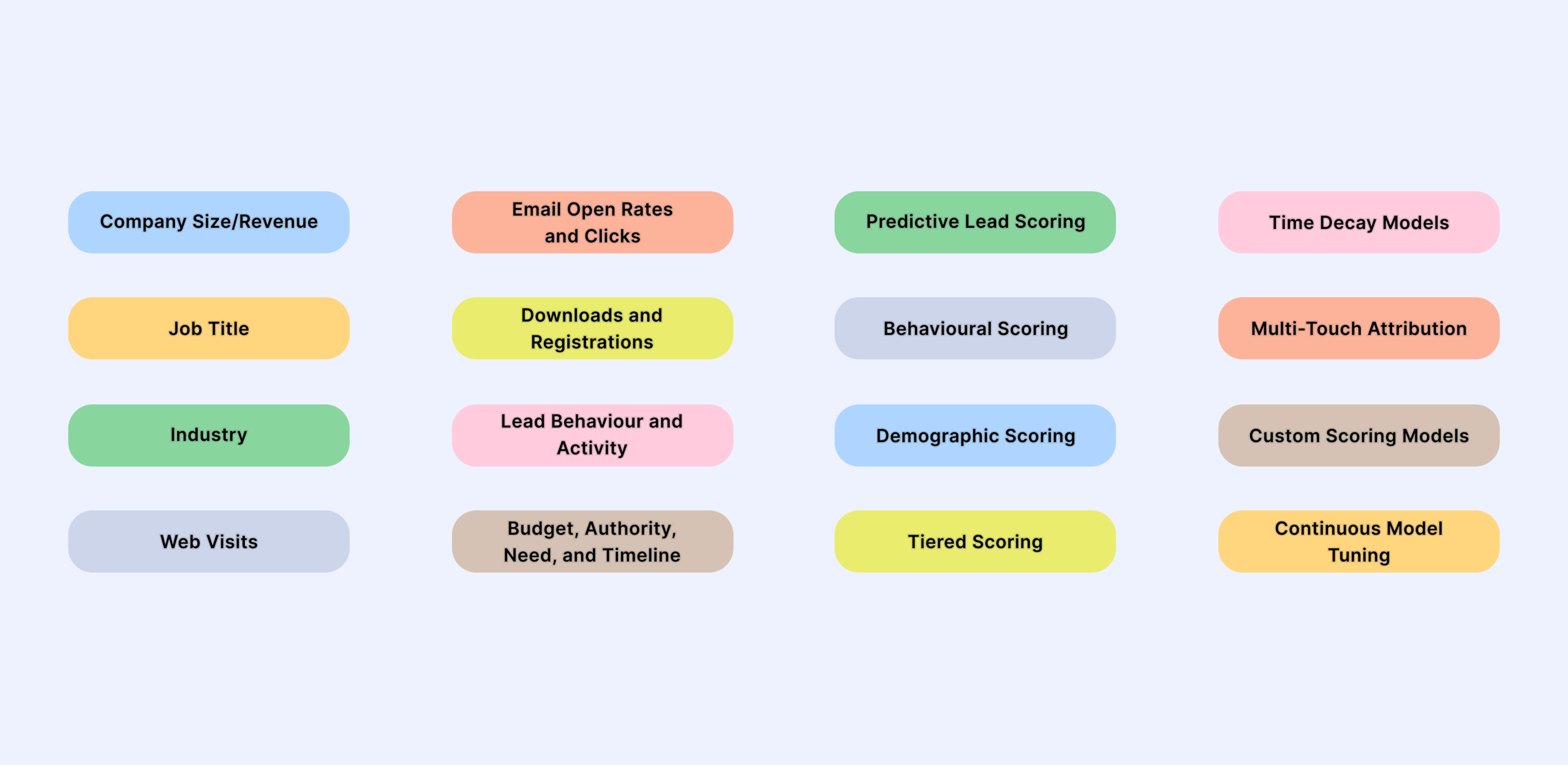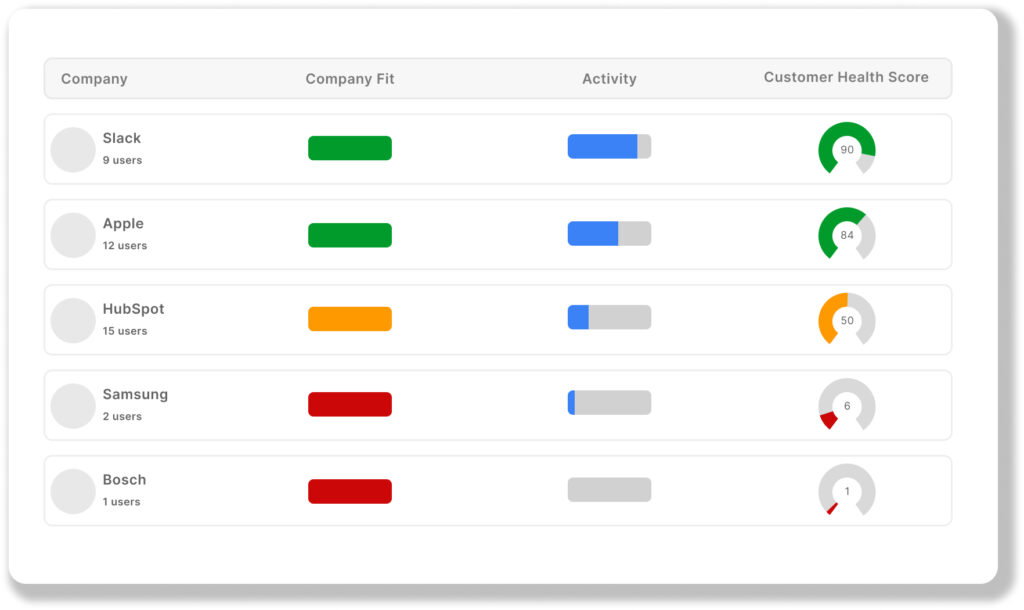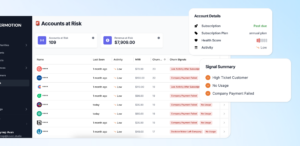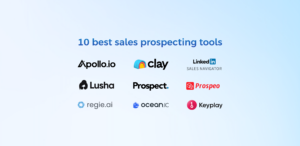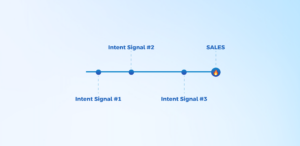As SaaS GTM teams, we all have one target: hot leads that can convert.
We keep shifting through a sea of potential customers, which is a long and hard way. But let’s face it, not all leads are the same or easy to qualify.
That’s exactly why we need lead scoring to qualify, prioritize, and work on our leads. And, by knowing all necessary lead scoring criteria, we can pinpoint the leads that are not just interested, but ready and worthy to embark on a sales journey.
In this article, we will share all of our learning and experience with 16 lead scoring criteria, divided into two categories: 8 basic and 8 advanced.
TL;DR: 16 Lead Scoring Criteria
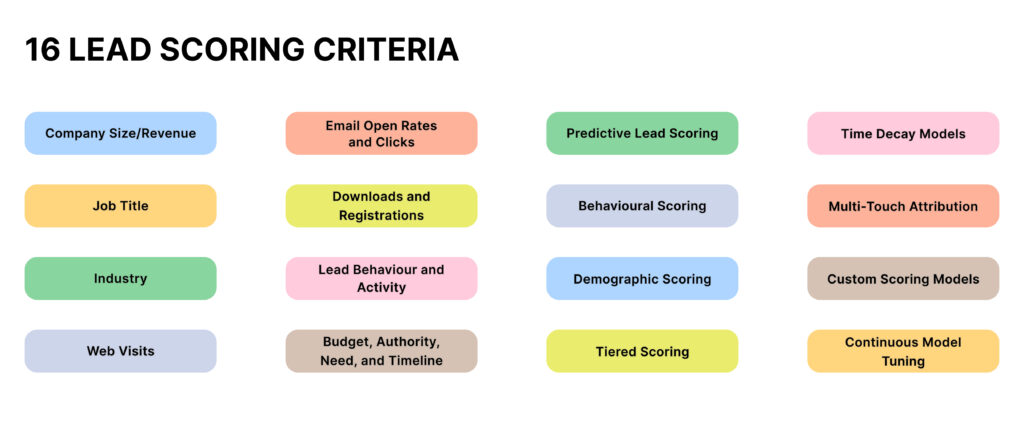
- Company Size/Revenue
- Job Title
- Industry
- Web Visits
- Email Open Rates and Clicks
- Downloads and Registrations
- Lead Behaviour and Activity
- Budget, Authority, Need, and Timeline
- Predictive Lead Scoring
- Behavioural Scoring
- Demographic Scoring
- Tiered Scoring
- Time Decay Models
- Multi-Touch Attribution
- Custom Scoring Models
- Continuous Model Tuning
Uncovering Lead Value: Lead Scoring Criteria
Lead scoring can significantly contribute to revenue growth. In a survey, 68% of marketers highlighted lead scoring as a top revenue contributor.
By focusing on the most promising leads, companies are more likely to close deals, thereby increasing revenue.
Here are 8 basic criteria (that can also be your criteria to identify your ICP) that you should look for while classifying leads:
1. Company Size/Revenue
What is your target audience? On what scale does your solution solve the problem?
Tailor your lead scoring based on the size and revenue of the companies you are targeting. Aligning with your ideal customer profile, whether targeting SMBs or large enterprises, allows for a more precise engagement strategy.
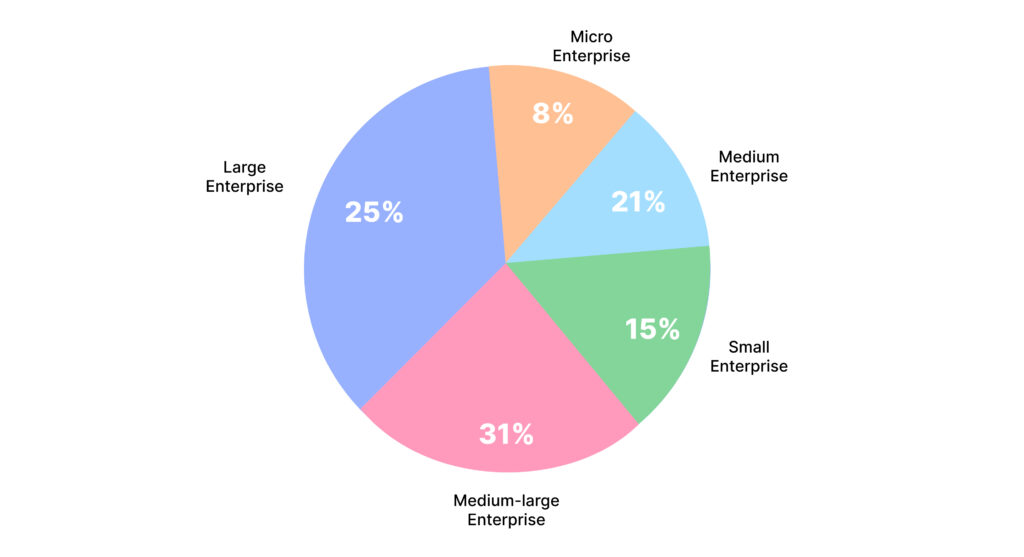
This doesn’t mean that you should directly eliminate the leads that don’t fall into your most desired category, but it can give you an overall idea of how much effort you should put into each conversion.
2 Job Title
You must have seen surveys that ask you “What is your role?” when you sign up for a new software. This is the reason.
Job titles provide an insight into the authority and influence of a lead within their organization.
Scoring based on job titles ensures you’re engaging with decision-makers or influencers who can propel the sales process forward.

3. Industry
If your solution exists for solving medical problems, you wouldn’t spend much time converting a developer into a premium paying customer, right?
Categorizing leads based on industry helps in aligning your offerings with the specific needs and challenges faced by different sectors.
This alignment paves the way for more engaging conversations and solutions.
4. Web Visits
The frequency and recency of visits to crucial pages on your website indicate a lead’s interest level. Monitoring interactions with product, pricing, or testimonial pages can provide invaluable insights into a lead’s engagement.
5. Email Opens and Clicks
Email engagement is a window into a lead’s interest and responsiveness. Frequent opens, clicks, and interactions with your email content signify a higher level of engagement and interest in your offerings.
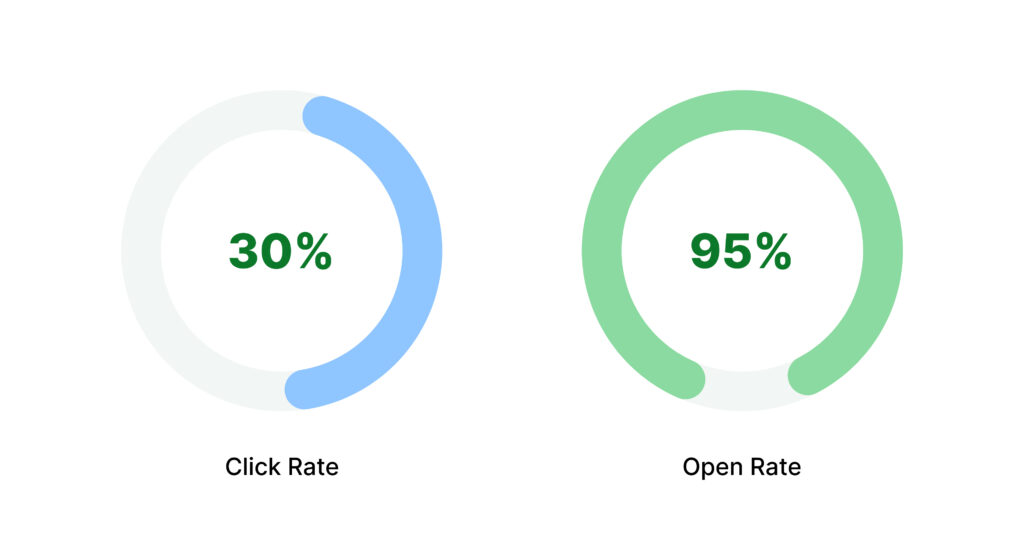
6. Downloads and Registrations
If you don’t provide downloadable checklists, ebooks, cheat sheets, or infographics, then you are missing out on big lead magnets.
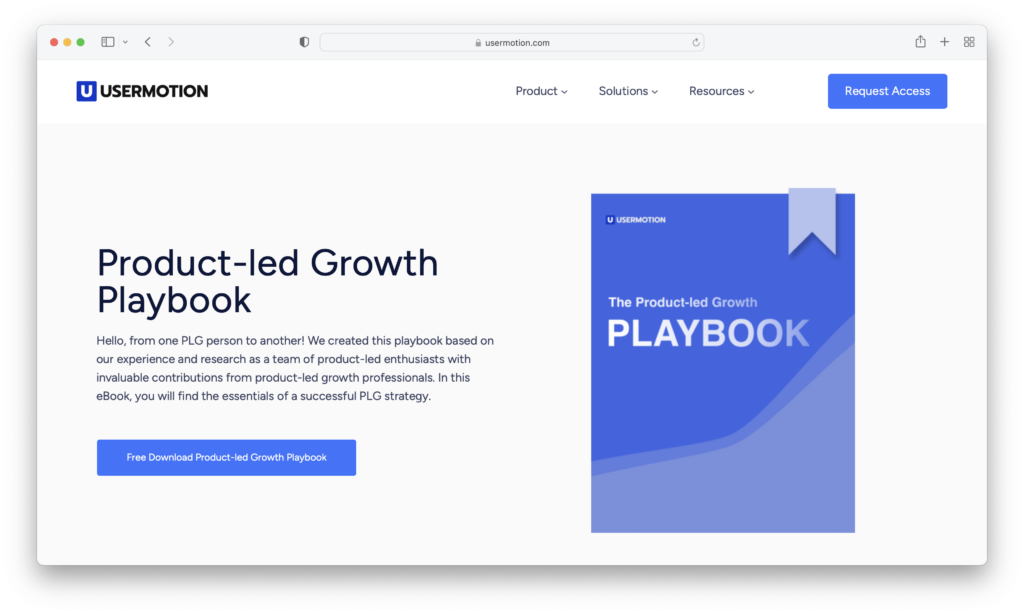
Leads interacting with your content – aka the lead magnets – by downloading resources or registering for webinars/events are demonstrating a proactive interest. These actions are strong indicators of a lead’s potential and readiness to move forward.
7. Lead Behavior and Activity
Figuring out the engagement level through various online and offline activities helps in understanding a lead’s interest and intent.
Monitoring web interactions, email engagement, content interaction, and event activity can provide a rich context for scoring leads.
And the best part is that this doesn’t take extra effort. You are probably already monitoring those data in order to figure out whether or not your marketing strategy works, so, why not reuse this to see this as a lead scoring criteria as well?
8. Budget, Authority, Need, and Timeline (BANT)
The BANT framework is a classic yet effective approach to qualifying leads based on their Budget, Authority, Need, and Timeline.
Understanding these four aspects can significantly enhance the precision of your lead scoring model, ensuring that your efforts are channeled toward leads that are ripe for conversion.
Beyond the Basics: Advanced Lead Scoring Criteria
Lead scoring also brings a level of objectivity to the sales process. It’s a tracking system that assigns a numerical value to each lead, indicating whether the lead is ready for sales, needs further nurturing, or should be discarded. This structured approach ensures that sales efforts are directed toward leads that are more likely to convert, thus optimizing the sales funnel.
Once you’ve got the hang of the fundamental lead scoring criteria, it’s time to delve deeper into advanced techniques that can further refine your lead scoring model.
These advanced methods allow for a more nuanced understanding of your leads, helping to prioritize not just who is ready to engage, but who is most likely to convert. Let’s explore some of these techniques:
9. Predictive Lead Scoring
Predictive lead scoring utilizes machine learning and AI to analyze historical data and identify patterns that indicate a lead’s likelihood to convert. It goes beyond static criteria, dynamically adjusting scores as more data becomes available. This method allows for a more accurate prediction of a lead’s potential, making your lead-scoring model more robust.
To benefit from predictive lead scoring, you can integrate a Product-Led Revenue platform that provides this service, such as Usermotion, and let it do the job for you.
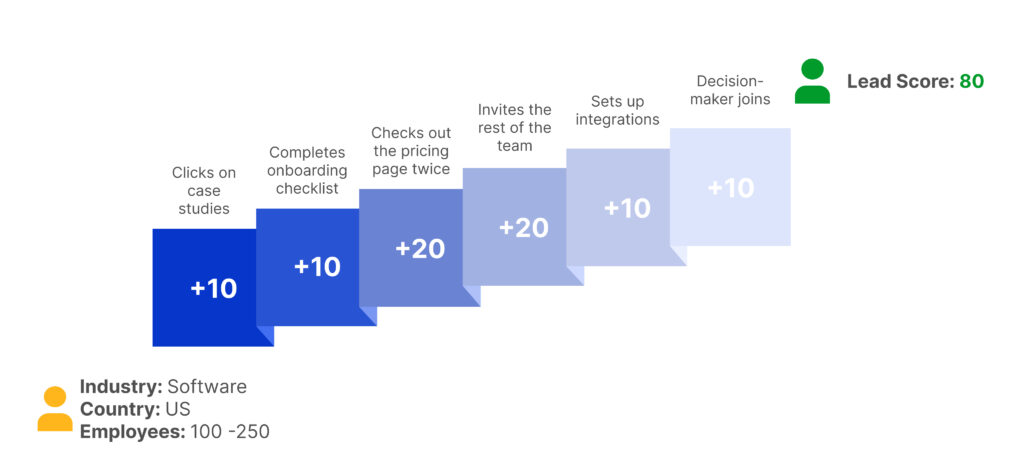
10. Behavioral Scoring
Behavioral scoring involves analyzing a lead’s interactions with your brand across various channels – be it email engagements, website visits, or social media interactions. By understanding a lead’s behavior, you can tailor your interactions to match their interests and engagement level, thus increasing the chances of conversion.
I hear you asking “So how is predictive lead scoring and behavioral scoring different?”.
Behavioral scoring focuses on analyzing a lead’s interactions and engagements with a company’s app, content and channels (which we also call product-qualified leads) such as website visits, email clicks, and social media activity to gauge their interest and intent.
On the other hand, predictive lead scoring utilizes machine learning and historical data to forecast a lead’s likelihood to convert based on past behaviors and other demographic factors.
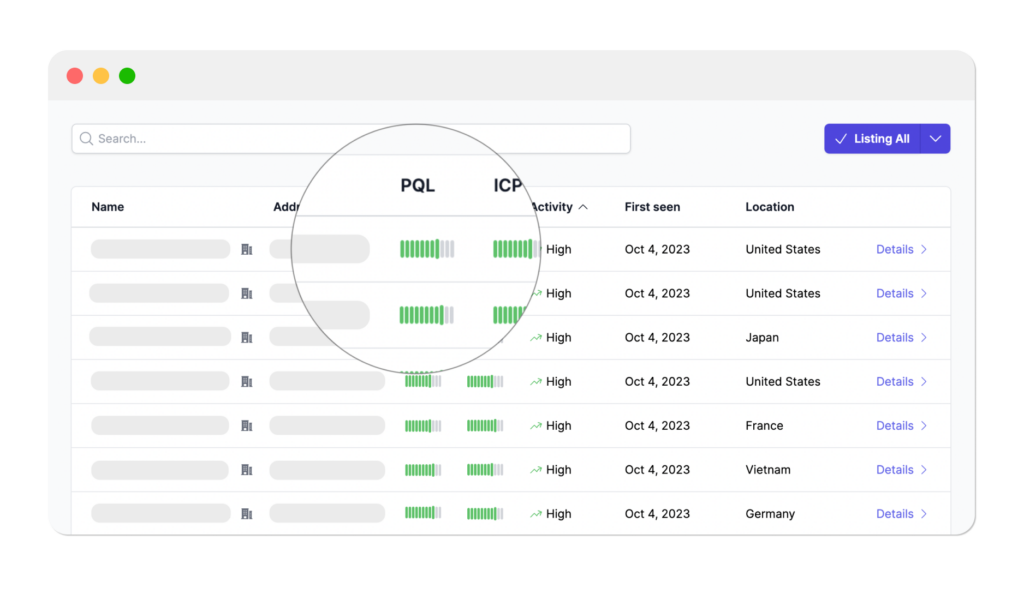
While behavioral scoring provides a snapshot of a lead’s current engagement level, predictive lead scoring offers a more forward-looking assessment by identifying patterns and trends that might indicate a lead’s future actions.
11. Demographic Scoring
While basic lead scoring models may consider broad demographic criteria, advanced demographic scoring dives into more granular details.
This could involve analyzing job roles within a specific industry, company size, geographic location, and more to fine-tune your scoring model.
For beginner companies, this detailed demographic scoring might not be necessary but as you scale, you will feel the need to gather more information about your segments to provide the best personalized experience for all your users.
12. Tiered Scoring
Tiered scoring involves creating multiple scoring models for different segments of your audience. For instance, a different scoring model could be used for leads from small businesses versus large enterprises.
This approach allows for a more personalized assessment of leads, taking into account the varying needs and behaviors of different market segments.
13. Time Decay Models
Time decay models factor in the recency of a lead’s engagement. It’s based on the principle that recent interactions are more indicative of a lead’s current interest level.
Or in simpler words, the more recent the interaction is, the higher the chance they are still interested.
By adjusting scores based on the timing of interactions, you can ensure that your sales team is focusing on leads that are actively engaged.
14. Multi-Touch Attribution
Multi-touch attribution gives credit to all the channels and touchpoints a lead interacts with along their customer journey. It provides a more holistic view of a lead’s journey and helps in understanding how different interactions contribute to lead nurturing and conversion.
15. Custom Scoring Models
Every business is unique, and sometimes off-the-shelf scoring models may not cater to specific needs. Creating custom scoring models that consider unique aspects of your business and market can provide a more accurate representation of lead quality.
If you are looking for a simpler way to integrate custom scoring models, a Customer 360 is what you need. A Customer 360 is an all-customer-data-in-one picture. It is a view where all the details about a customer are collected and displayed in one place.
You can assign your own categorization criteria to each lead using the Customer 360, and let it alert you when something new happens or let you know if you need to take immediate action on a possible high-quality lead.
16. Continuous Model Tuning
Lead scoring isn’t a set-it-and-forget-it task. Continuously analyzing the performance of your scoring model and making necessary adjustments ensures that your model remains accurate and aligned with your evolving business goals.
Conclusion
Expanding your lead scoring strategy to include these advanced techniques can significantly enhance the accuracy and effectiveness of your lead scoring model. As you delve into these advanced methods, you’ll find your lead scoring system becoming a more powerful tool for prioritizing leads and driving conversions.
Each of these criteria, when meticulously integrated into your lead scoring model, forms a potent framework to prioritize and engage leads. This comprehensive approach ensures that your sales and marketing teams are always a step ahead, engaging with leads that are most likely to convert, thereby accelerating your revenue growth trajectory.
FAQs
The criteria for lead scoring involve evaluating a lead’s demographic information, behavioral actions, and engagement levels with a company’s content and channels. This includes factors such as job title, company size, industry, website visits, email interactions, and content downloads, which help in gauging the lead’s interest and fit with the company’s offerings.
Lead scoring typically falls into two categories: explicit and implicit scoring. Explicit scoring is based on factual information provided by or about the lead, like demographic details, while implicit scoring is derived from observing the lead’s behavior and interactions with the company’s content and channels.
To optimize lead scoring, it’s essential to continuously analyze and refine the scoring model based on feedback from sales outcomes and evolving market conditions. Additionally, leveraging advanced analytics and machine learning can help in fine-tuning the model to ensure it accurately reflects the lead’s potential to convert and aligns with the sales team’s priorities.

